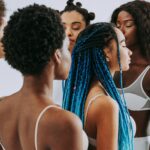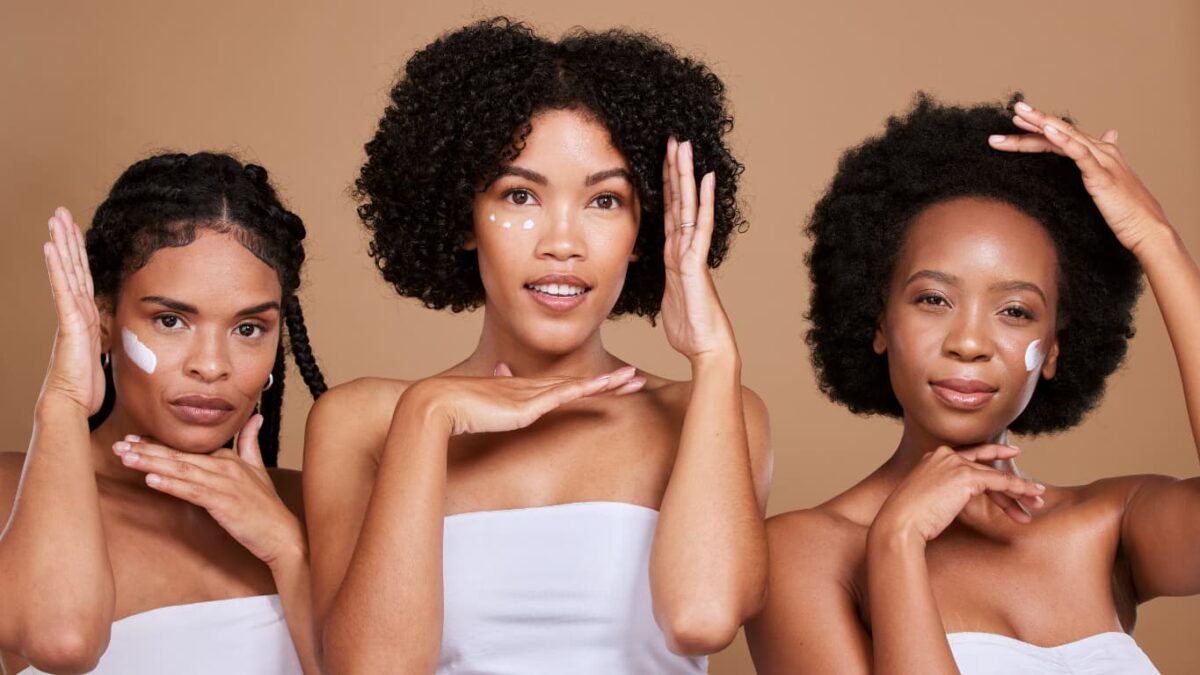
Are Hair Products Linked to Fibroids? Understanding the Risks for Black Women
September 9, 2019
Endocrine Disruptors: The Hidden Threat to Black Women’s Reproductive Health
March 29, 2025Black women have always been at the forefront of beauty—creating trends, innovating styles, and shaping global aesthetics. From the braids of ancient Africa to the bold edges of TikTok, we’ve been the blueprint. But despite our undeniable influence and trillion-dollar spending power, we’re still being exploited, excluded, and endangered by the very industry we helped build.
At *Melanin In Balance, we’re not just talking about beauty. We’re talking about ownership, autonomy, and *reproductive justice in a system that too often sees us as profit, not people.
A Legacy of Beauty and Resistance
The relationship between Black women and beauty is deep, complex, and often political.
- In pre-colonial African societies, hair was a form of identity—signaling tribe, status, age, and spirituality.
- During slavery in the Americas, enslaved women were forced to cover their hair, leading to the invention of protective styles that still live on today.
- In the 1900s, Madam C.J. Walker became the first self-made female millionaire in America—not just for creating products, but for empowering Black women economically and socially through haircare.
Beauty has always been more than vanity for us. It’s been a tool for survival, expression, and power in the face of systemic oppression.
The Beauty Industry: Built on Our Backs
Fast-forward to today, and the beauty industry is booming—thanks in large part to Black women.
- We spend nine times more on ethnic hair care products than any other group.
- In the U.S., Black consumer spending power surpassed $1.8 trillion in 2023.
- 86% of Black women agree that brands “should support Black women beyond the marketing,” according to Nielsen.
And yet…
- Less than 3% of beauty brands in major retailers are Black-owned.
- We are *overrepresented as consumers, but *underrepresented in leadership and ownership.
- Many of the products marketed to us contain high levels of toxic chemicals, including endocrine disruptors that harm our reproductive health.
We are the faces of campaigns—but not the decision-makers in boardrooms. We drive trends—but are too often the last to benefit from them safely.
When Beauty Becomes a Health Hazard
It’s not just economic inequality—it’s a public health crisis.
Studies show that many beauty and personal care products marketed to Black women contain more endocrine-disrupting chemicals (EDCs) than those marketed to white consumers.
These chemicals are linked to:
- Uterine fibroids (Black women are 2–3x more likely to have them)
- Early puberty
- Infertility and pregnancy complications
- Breast and uterine cancer
This means Black women, despite being major contributors to the beauty economy, are also bearing the greatest health risks—without full awareness or consent.
Why Aren’t We Protected?
Despite our spending power, Black women are still in less powerful positions to make decisions about what goes into our products and how we’re marketed to.
Why?
- Systemic racism in healthcare and policy means our pain is ignored and our concerns are under-researched.
- Lack of representation in product development and formulation.
- Influencer culture amplifies aesthetics, but often silences conversations about safety and long-term health.
- Beauty industry profits from our insecurities—rooted in eurocentric standards, colorism, and the pressure to conform.
We’re told to celebrate “melanin magic” while being sold products that poison that same melanin from the inside out.
What the Beauty Industry Should Look Like
We don’t want to just be seen—we want to be safe, heard, and in control.
The best-case scenario is one where Black women:
- Have ownership and equity in the beauty industry—not just marketing deals
- Are included in ingredient testing, research, and safety regulation
- Create and support brands that center reproductive justice, not just aesthetics
- Have access to clean, transparent, and culturally competent products
- Lead conversations about wellness, not just style
And most importantly: we should never have to choose between self-expression and self-protection.
Melanin In Balance: Our Stand
We created Melanin In Balance because we were tired of the silence. Tired of being praised for our beauty while suffering in private. Tired of the toxic products, the hormone disruption, the fertility struggles—and no answers.
This platform exists to:
- Educate Black women on the impact of beauty products on hormonal and reproductive health
- Advocate for clean, ethical, and inclusive beauty solutions
- Demand accountability from brands and lawmakers
- Create space for healing, unlearning, and empowerment
We deserve more than pretty packaging. We deserve protection.
The Call to Action
We’re not powerless. We are powerful beyond measure—but that power must be protected and directed with purpose.
Here’s how we begin:
- Support Black-owned, clean beauty brands
- Call out greenwashing and demand transparency in ingredients
- Push for policy that protects consumers from toxic products
- Invest in education on hormonal health and product safety
- Use your platform—big or small—to shift the conversation
We’re no longer settling for being the face of the trend. We’re stepping into our role as the force behind real change.
Sources & Data
McKinsey & Company: The State of Diversity in Beauty (2022)
Nielsen Report: Black Impact: Consumer Spending Trends (2023)
Environmental Research: Hair Product Use and Hormone-Disrupting Compounds
Journal of Epidemiology: Chemical Hair Straighteners and Uterine Fibroids
American Journal of Obstetrics & Gynecology: Disparities in Reproductive Health Outcomes


